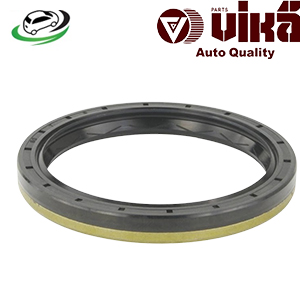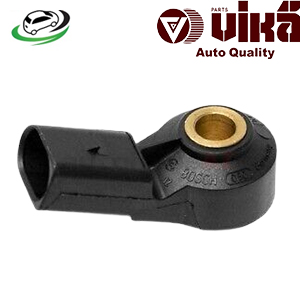-14%
Get AUDI A1 2011-2014 / AUDI A3 2008-2013 Breather Hose One Way Valve 030103175B
The breather hose one-way valve, also known as the PCV (Positive Crankcase Ventilation) valve, is an essential part of the engine’s ventilation system. It allows the controlled release of gases from the crankcase while preventing oil or dirt from entering the system. The one-way valve ensures that these gases flow out without allowing external contaminants back into the system. This valve typically connects the crankcase to the intake manifold.
2. How Does the Breather Hose One-Way Valve Work?
During engine operation, air and fuel are drawn into the combustion chamber where the fuel is burned. However, not all combustion gases stay in the chamber—some gases, referred to as blow-by gases, escape past the piston rings and enter the crankcase. These gases include a mixture of hydrocarbons, fuel vapors, water vapor, and other contaminants, which can form sludge if left to accumulate in the engine oil.
The breather hose one-way valve serves as a ventilation point for these gases, channeling them away from the crankcase and back into the intake manifold for re-combustion. The valve only allows these gases to move in one direction—out of the crankcase—while preventing contaminants or air from flowing back in.
Key aspects of the valve’s operation include:
- Positive Pressure Venting: When there’s pressure buildup inside the crankcase, the one-way valve opens to release the blow-by gases.
- Prevention of Backflow: The valve prevents air from flowing into the crankcase when the pressure is low, helping to maintain a vacuum that aids in drawing harmful gases out.
3. Benefits of a Breather Hose One-Way Valve
The breather hose one-way valve provides multiple benefits for vehicle performance and engine longevity:
- Prevents Oil Contamination: By venting harmful blow-by gases out of the crankcase, the valve prevents the buildup of water vapor, unburned fuel, and other contaminants that could degrade the engine oil. Cleaner oil ensures better lubrication and reduces engine wear.
- Improves Engine Efficiency: By returning unburned fuel vapors back to the intake manifold for combustion, the system contributes to better fuel economy. It reduces wasted fuel and emissions, while helping the engine operate more smoothly.
- Reduces Sludge Formation: The valve mitigates sludge buildup inside the engine by preventing excessive moisture and fuel from accumulating. Sludge can clog oil passages and reduce the engine’s efficiency if not controlled.
- Environmental Benefits: By routing blow-by gases back to the intake system for re-burning, the valve reduces the amount of hydrocarbons released into the atmosphere, making the system compliant with emissions regulations.
- Helps in Crankcase Pressure Regulation: Proper regulation of pressure in the crankcase prevents oil leaks and gasket failure. Without a functioning breather system, pressure can cause oil seals to fail, leading to oil leakage.
4. Components of the Breather Hose One-Way Valve
The breather hose one-way valve is a simple yet durable piece of hardware. It consists of:
- Valve Body: Typically made of plastic or metal, it houses the internal components and connects to the breather hose.
- Spring Mechanism: A small spring inside the valve helps to control the movement of the valve diaphragm. The spring opens the valve when crankcase pressure builds and closes it when the pressure decreases.
- Diaphragm or Valve Disc: This component opens and closes based on pressure changes, allowing gases to flow out but blocking the entry of external air.
- Hose Connection Points: The valve connects to the breather hose, which routes the gases to the intake manifold.
5. Types of Breather Hose One-Way Valves
- Fixed Orifice Valves: These valves have a fixed opening that allows gases to escape regardless of the engine load. These are simpler but less efficient in managing varying crankcase pressures.
- Variable Orifice Valves: These valves adjust the size of the orifice based on engine load, allowing for better regulation of blow-by gases.
6. Maintenance and Troubleshooting
Proper maintenance of the breather hose one-way valve is crucial for ensuring its continued operation. Here’s how to keep it functioning optimally:
- Inspection: Over time, the valve can become clogged with oil deposits, dirt, and sludge. Regular inspection every 20,000 to 30,000 miles, or as recommended by the vehicle manufacturer, helps detect any blockages or malfunctions.
- Cleaning: If the valve is dirty but still functional, cleaning it with appropriate solvents can restore its performance. However, valves that are severely clogged or damaged should be replaced.
- Signs of Failure:
- Oil Leaks: Excessive pressure buildup in the crankcase, due to a clogged valve, can cause oil seals to fail, leading to oil leaks around the engine.
- Rough Idle: If the valve gets stuck open, it can cause too much air to enter the intake manifold, leading to an unstable air-fuel mixture and rough idling.
- Decreased Engine Performance: A clogged or malfunctioning valve can prevent the proper venting of crankcase gases, leading to pressure buildup and reduced engine efficiency.
- Check Engine Light: Many vehicles have sensors that monitor crankcase pressure. If the valve malfunctions, it can trigger the check engine light.
- Replacement: The valve itself is usually inexpensive and relatively easy to replace. It’s advisable to replace the breather hose one-way valve every 50,000 to 75,000 miles or whenever symptoms of failure arise.
7. Importance of Regular Valve Replacement
Given that the breather hose one-way valve plays a crucial role in maintaining optimal engine performance and longevity, regular replacement is important. Old or malfunctioning valves can lead to:
- Engine Damage: Failure to vent crankcase gases properly can cause significant internal pressure, leading to blown seals and leaks.
- Poor Fuel Economy: Inefficient combustion of fuel vapors can result in a noticeable decrease in fuel efficiency.
- Emission Problems: Malfunctioning valves can cause vehicles to fail emission tests due to the release of excess hydrocarbons.
8. Common Misconceptions
- No Valve Needed: Some believe that older vehicles or engines with fewer emissions regulations don’t require a functioning breather valve. However, regardless of regulations, a functioning breather hose valve ensures better engine performance and longevity.
- Valve Only for High-Performance Engines: The breather hose one-way valve is essential for all engine types, from daily drivers to performance vehicles.
Conclusion
The breather hose one-way valve is a small but crucial component in automotive engines. It helps maintain pressure balance in the crankcase, prevents oil contamination, improves fuel efficiency, and reduces harmful emissions. Regular inspection, cleaning, or replacement of the valve ensures optimal engine performance and longevity. Neglecting the maintenance of this valve can result in engine damage, poor fuel economy, and increased emissions, all of which affect the vehicle’s overall performance and reliability.
Follow us on Facebook for more parts.




Reviews
Clear filtersThere are no reviews yet.